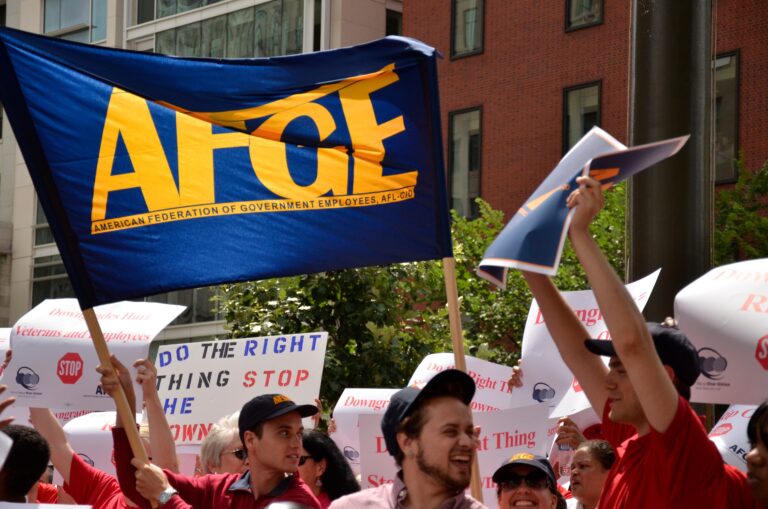
Fred Messner is a student at Harvard Law School.
Today is the opening day of the Supreme Court’s 2021-22 term. And, for the first time in years, the Court’s merits docket is bereft of disputes bearing directly on the rights of workers. The absence of labor and employment cases should be the subject of some relief, as the Court’s recent forays into those domains have yielded defeats large and small for working people. In 2018, the Court decided Epic Systems Corp. v. Lewis, which approved employers’ practice of forcing employees to agree to mandatory arbitration agreements—thus waiving their right to bring collective and class actions under the Fair Labor Standards Act—as a condition of their employment. Shortly afterwards, the Court held in Janus v. American Federation of State, Country, and Municipal Employees that state laws requiring public sector employees to pay agency fees violate the First Amendment. The following term, the court held that railroads’ payments to employees for working time lost due to on-the-job injuries are taxable and also decided two cases strengthening employers’ prerogative to subject employees to forced arbitration. More recently, the Court has expanded the “ministerial exception” to federal antidiscrimination law and found that a crucial California law guaranteeing union organizers limited access to farms effects a taking under the Fifth Amendment. To be sure, the Court’s docket has included bright spots, such as the landmark holding in Bostock that the 1964 Civil Rights Act’s prohibition of discrimination “because of [an] individual’s . . . sex” reaches discrimination based on sexual orientation and gender identity, but the general anti-worker thrust of the Court’s labor and employment jurisprudence is hard to deny. Consequently, the 2021-22 Court may end up being the most pro-worker in years simply by declining to do any more damage.
That said, one case coming before the Court is likely to have major, if indirect, implications for the ability of a newly rejuvenated National Labor Relations Board to reorient federal labor policy. In late November, the Court will hear argument in American Hospital Association v. Becerra, a challenge to an obscure regulation promulgated by the Department of Health and Human Services. As part of the case, the Court is expected to pass on the continuing viability of Chevron deference, the doctrine under which federal courts defer to agencies’ reasonable interpretations of their organic statutes. Chevron has come under attack from conservatives eager to shift policymaking authority into the increasingly conservative judiciary, and commentators have wondered whether the Court will use Becerra to curtail the doctrine even further. The age of the National Labor Relations Act and the breadth of its language require the NLRB to frequently engage in valid though contestable interpretive exercises to apply it to modern conditions. A conservative judiciary empowered to conduct de novo review of these interpretations could act as a severe constraint on the Board’s power to safeguard employees’ right to organize.
Elsewhere, the Washington Post hosted a column this morning by the authors of a recent study examining “how non-disclosure agreements [NDAs] influence the flow of information in labor markets.” The researchers “explored how online reviews of companies by current and former employees changed after three states—California, New Jersey and Illinois—passed laws prohibiting firms from using NDAs as imposed as a condition of employment to conceal unlawful activity.” In short, the authors found that the “narrow-NDA laws” liberated workers to tell the truth about their bosses’ misconduct: after the laws were passed, workers who left negative reviews on GlassDoor were significantly more likely to share their job title and far more likely to report incidents of harassment. Moreover, the gap on that platform between highly rated and low-rated firms grew, which the researchers interpreted as evidence that “in the narrow-NDA states, good companies were better able to distinguish themselves from those with bad practices.” Harvard Law School’s own Terri Gerstein has a thread about the research here.
Finally, The Atlantic published an article detailing the “lack of attention” developers and employers have paid to indoor air quality in recent years. Citing a variety of newly published research, Professor Joseph Allen of the Harvard T. H. Chan School of Public Health explains that modern buildings’ lack of sufficient ventilation drives elevated concentrations of carbon dioxide that damage the human brain. Because Americans spend so much time at work, poor office air quality can cause severe harm over time. The entire article is worth exploring, as is Professor Allen’s “Healthy Buildings” initiative.






Daily News & Commentary
Start your day with our roundup of the latest labor developments. See all
December 5
Netflix set to acquire Warner Bros., Gen Z men are the most pro-union generation in history, and lawmakers introduce the “No Robot Bosses Act.”
December 4
Unionized journalists win arbitration concerning AI, Starbucks challenges two NLRB rulings in the Fifth Circuit, and Philadelphia transit workers resume contract negotiations.
December 3
The Trump administration seeks to appeal a federal judge’s order that protects the CBAs of employees within the federal workforce; the U.S. Department of Labor launches an initiative to investigate violations of the H-1B visa program; and a union files a petition to form a bargaining unit for employees at the Met.
December 2
Fourth Circuit rejects broad reading of NLRA’s managerial exception; OPM cancels reduced tuition program for federal employees; Starbucks will pay $39 million for violating New York City’s Fair Workweek law; Mamdani and Sanders join striking baristas outside a Brooklyn Starbucks.
December 1
California farmworkers defend state labor law, cities consider requiring companies to hire delivery drivers, Supreme Court takes FAA last-mile drivers case.
November 30
In today’s news and commentary, the MSPB issues its first precedential ruling since regaining a quorum; Amazon workers lead strikes and demonstrations in multiple countries; and Starbucks workers expand their indefinite strike to additional locations. Last week, the Merit Systems Protection Board (MSPB) released its first precedential decision in eight months. The MSPB had been […]